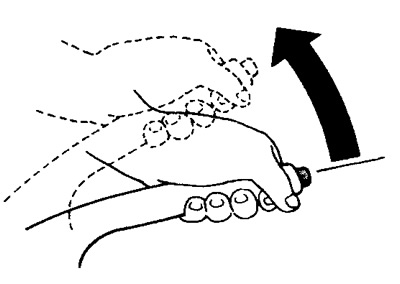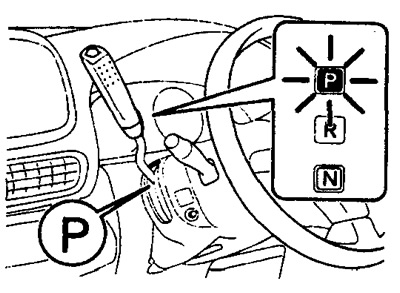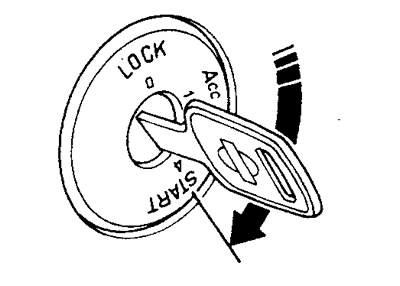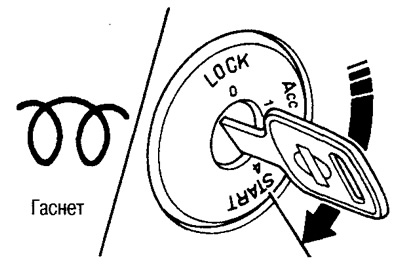Before starting the engine
1. Adjust the seat and steering column so that you can pedal securely and turn the steering wheel comfortably.
2. Place your right foot so that you can safely control the gas and brake pedals.

3. Make sure the parking brake is applied (brake warning light on).

4. Make sure the selector lever is in position P.

The engine can also be started from the N position, but for safety reasons, start from the P position.
Starting a gasoline engine
Attention:
Do not start the engine or drive the vehicle in a poorly ventilated area. The exhaust contains carbon monoxide, which can be poisonous.
Do not turn on the starter for more than 10 seconds, as the battery may be discharged or the starter may be damaged.
If the engine does not start, turn the ignition key to the Ace or OFF position, wait at least 10 seconds, and then restart.
Starting the engine under normal conditions
1. Press a brake pedal against the stop.
2. Turn the ignition key to the START position without depressing the gas pedal and start the engine.

Release the ignition key after starting the engine.
3. Warm up the engine. As the engine warms up, the engine speed gradually decreases.
Starting a warm engine
If the engine does not start well after driving at high speeds or after driving on mountain roads, do the following:
1. Start the engine by lightly depressing the gas pedal (about ⅕ of the full stroke).
2. If the engine starts, raise the speed to critical by pressing the gas pedal, and then gradually reduce the speed to idle.
Diesel engine start
Attention:
Do not start the engine or drive the vehicle in a poorly ventilated area. The exhaust contains carbon monoxide, which can be poisonous.
Do not turn on the starter for more than 30 seconds, as the battery may be discharged or the starter may be damaged.
If the engine does not start, turn the ignition key to the Ace or OFF position, wait at least 20 seconds, and then restart.
Note:
After starting before warming up, do not force the engine speed.
Warming up is sufficient when the pointer begins to move.
1. Press a brake pedal against the stop.
2. Turn the ignition key to the ON position (glow indicator light on dashboard).
3. After the glow indicator goes out, turn the ignition key to the START position and start the engine.

Release the key after starting the engine.
4. Warm up the engine. As the engine warms up, the engine speed gradually decreases.
Driving a vehicle equipped with a turbocharged engine
The engine mechanism with a turbocharger is a precision device that, by introducing a large amount of air into the engine, allows you to develop high power. Pay attention to the following precautions to avoid engine damage or power loss.
After starting the engine
Do not force the speed, do not make sudden accelerations on a cold engine.
How to turn off the engine
After driving at high speed or after a long hill, do not stop the engine immediately, let it idle for a while.

Changing engine oil and oil filter
Use the recommended oil. Make timely oil changes.
- Engine oil class CD, CF-4: Every 15,000 km or annually
- Oil filter change: Every 15,000 km or annually